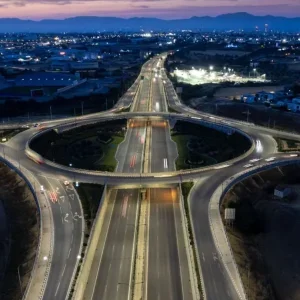Egypt’s transportation minister Ibrahim El-Demery said that he regrets the government’s decision to hand over control of the Azhar Tunnel to Cairo governorate, pointing out that he feels sad every time he passes through the tunnel and sees what poor condition it is in now.
El-Demery recently told journalists that the government invested LE150 million on fire resistant materials while constructing the tunnel so as to avoid a disaster… But, El-Demery added, despite all their plans, the tunnel’s condition has deteriorated due to the absence of regular maintenance.
While El-Demery’s statements point out the tunnel’s poor conditions, a different incident three weeks ago alarmed the public that there might be a real problem with the tunnel that could at some point lead to a catastrophe.
On 26 February, all the roads leading to the tunnel and the eastern district of Heliopolis were jammed. Traffic in downtown Cairo and around Opera Square came to halt, as traffic officers directed cars to use Al-Azhar Bridge, 6 October Bridge or the Autostrade as an alternative. Life in Opera Square stopped as Azhar Tunnel closed itself to traffic for the third time in less than two weeks.
The tunnel is the longest in Cairo, 2.6km long, and one of its most important, carrying thousands of cars every day. Its closure that day by the Azhar Tunnel Operating Authority for technical problems caused a chaotic scene in downtown Cairo and shifted traffic to other roads.
Waleed Ali, head of the tunnel’s maintenance authority, said that the tunnel has been closed at least twice due to delays in securing vital spare parts, as well as for repairs on surveillance cameras and the tunnel’s ventilation system.
The third time the tunnel was closed was due to a power cut, Ali said.
However, Cairo governorate officials have insisted that there are no problems with the tunnel.
"The tunnel is fine and there aren’t any problems," said Cairo Governor Galal El-Saeed.
The morning after the tunnel’s closure, the head of the Azhar Tunnel Operation Authority, Ibrahim Samaha, announced his resignation, saying that there had been several technical issues in the tunnel and that requests to fix them had been ignored.
He also told the media that he couldn’t afford to wait any longer – he feared a catastrophe in the tunnel and, as head of its authority, he would be blamed.
Ali, from the maintenance division, said that the ongoing problems weren’t technical so much as bureaucratic, stressing that his team had to endure long waits for the delivery of key parts and that often his requests were ignored.
"The governorate is not a technical entity but rather an administrative entity," Ali said. "They don’t understand the essence of time or providing these spare parts right away."
These difficulties were apparent on 26 February, when the tunnel was shut down for several hours due to repairs.
For Ahmed El-Hakim, professor of traffic and transportation engineering at Al-Azhar University, the problems with the Azhar Tunnel began in 2009, when its control was shifted from the National Authority for Tunnels (NAT), which operates under the transportation ministry, to Cairo governorate.
The NAT is a very "specialised entity", El-Hakim says, which also operates Cairo’s metro lines as well, but he says that the NAT was spending money on the tunnel and not receiving any revenues, so the authority decided to let it go.
With mounting difficulties, the Cairo governorate has since offered to hand the tunnel back to the NAT, said El-Demery, adding that the NAT didn’t manage the tunnel well.
Another option is to bring the tunnel’s authority under the supervision of the transportation ministry, he said.
Whoever is in charge, tunnel maintenance head Ali believes that something needs to be done, and fast.
"If these problems are not solved immediately, there will be a catastrophe," he said."







